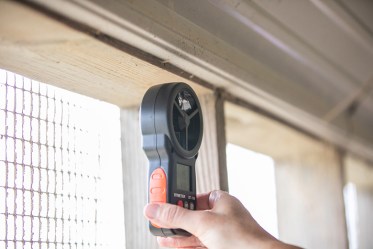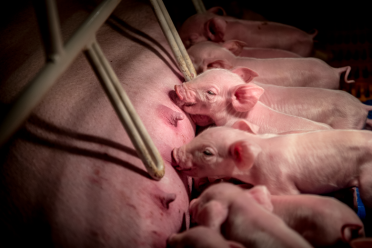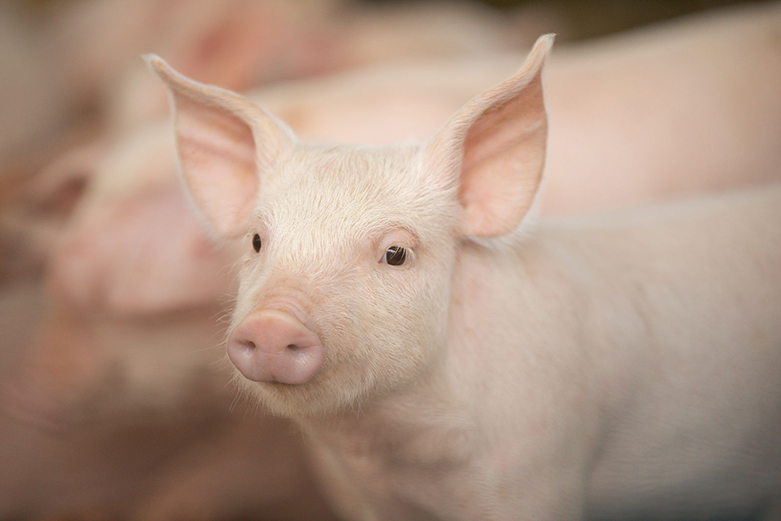Summer is on its way, and along with it comes the heat and humidity. Unlike people, pigs cannot sweat and must cool themselves in other ways, such as panting, air flow, lying on the cold floor, or water evaporation (water/mud/feces on skin). Because some of these methods (air flow or evaporation for example) may depend on how facilities are managed, here are some ways to help you prepare your barns and the animals for those warmer months.
General Considerations
- Reach out to your nutritionist—prepare for lower feed intake, especially in lactation.
- Double-check refrigerators designated for medication and semen dose storage are functioning at the correct temperature whether they are in the office or in the barn.
- Have refrigerators for medicine and semen storage at least 2 inches away from any wall.
- Don’t underestimate pathogens; maintain a high level of biosecurity to keep your herd healthy.

Ventilation
- Check cool cells regularly and report any inconsistencies or malfunctioning.
- Consider treating cool cells to control build-up of algae and fungi.
- Check fan blades, louvers, blinds, and frames; clean, seal, patch or replace as needed to improve efficiency.
- Grease curtain and inlet pulleys and controllers, particularly for naturally ventilated barns.
Nutrient Access
- Check water availability twice daily.
- Ensure accurate water flow rate.
- PIC recommends a .5 gal/minute flow rate for sows in the farrowing room.
- PIC recommends a .44 gal/minute flow rate for sows and gilts not in the farrowing room.
- Plan feed orders early and avoid out-of-feed events.
- Reassess diet formulation to maximize feed intake.
Transportation Considerations
- Plan weaning and shipment of piglets for early morning, as early as possible.
- Avoid having trailers sit in the heat for extended periods of time when they are loaded with animals.
- Ensure the truck is fueled and has proper documentation; minimize stops on the way to the destination.
- Lower the stocking density when transporting to allow for adequate air movement and evaporative cooling.

Farrowing
- Try to maintain cool rooms for sow comfort. If room temperatures exceed 90 degrees, consider spraying sows at regular intervals.
- When using this practice, closely monitor humidity.
- Identify the sows that are not drinking within the first 6 hours after loading and train them on how to use the water source.
- Monitor sow fever by measuring body temperatures 24-hours post farrow and treat them if in fever. See here for more details
- In warmer rooms with litters 5+ days old, consider turning off the heat sources in the farrowing spaces.
- Any feed left in feeder will quickly get sour and spoiled. Closely monitor and remove excess feed to prevent spoilage.
Breeding & Gestation
- Heat detection early in the morning will produce a better response than later in the day. Plan the daily chores accordingly.
- Protect semen doses in higher temperatures when out in the barn.
- Reduce the number of semen doses taken back from the barn to the semen storage unit to zero.
- Breed earlier in the morning when temperatures are lower.
- Stimulate weaned sows to eat and feed them at least two times daily.
The new Reproduction training videos also provide an excellent resource for training new employees or as a refresher course for tenured employees. Lastly, PIC’s Sow and Gilt Management Guidelines are all-encompassing of PIC’s recommendations.






